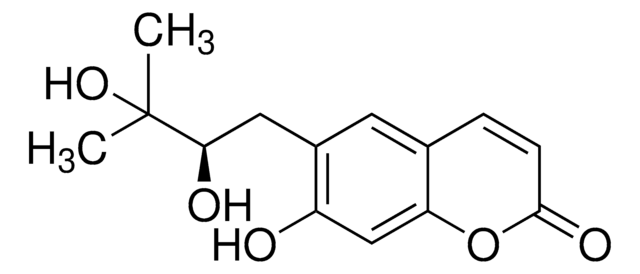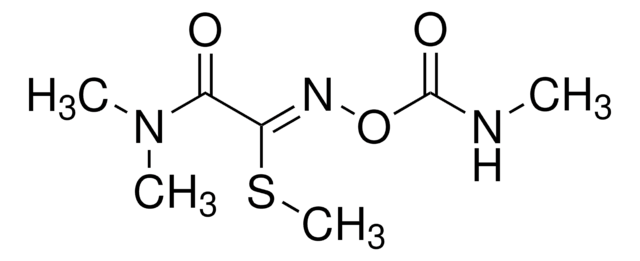PS676
Methamidophos
analytical standard
Synonym(e):
O,S-Dimethyl-phosphoramidothioat
About This Item
Empfohlene Produkte
Qualität
analytical standard
Verpackung
ampule of 100 mg
Hersteller/Markenname
Chem Service, Inc. PS-676
Methode(n)
HPLC: suitable
gas chromatography (GC): suitable
Anwendung(en)
agriculture
environmental
Format
neat
SMILES String
COP(N)(=O)SC
InChI
1S/C2H8NO2PS/c1-5-6(3,4)7-2/h1-2H3,(H2,3,4)
InChIKey
NNKVPIKMPCQWCG-UHFFFAOYSA-N
Suchen Sie nach ähnlichen Produkten? Aufrufen Leitfaden zum Produktvergleich
Allgemeine Beschreibung
Anwendung
Lagerklassenschlüssel
11 - Combustible Solids
WGK
WGK 3
Flammpunkt (°F)
413.6 °F - closed cup
Flammpunkt (°C)
212 °C - closed cup
Choose from one of the most recent versions:
Analysenzertifikate (COA)
Sorry, we don't have COAs for this product available online at this time.
If you need assistance, please contact Kundensupport
Besitzen Sie dieses Produkt bereits?
In der Dokumentenbibliothek finden Sie die Dokumentation zu den Produkten, die Sie kürzlich erworben haben.
Unser Team von Wissenschaftlern verfügt über Erfahrung in allen Forschungsbereichen einschließlich Life Science, Materialwissenschaften, chemischer Synthese, Chromatographie, Analytik und vielen mehr..
Setzen Sie sich mit dem technischen Dienst in Verbindung.








